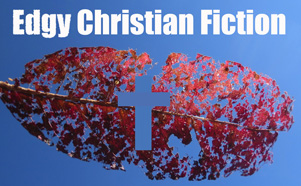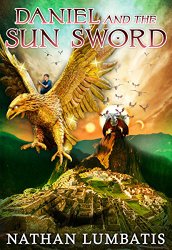Nathan Lumbatis approached me about reviewing his debut novel, Daniel and the Sunsword, but I was unable to at the time due to other review requests so I offered him a guest post to promote his novel. He decided to give some of the background to the plot of the novel. So far, at the time of this post, the six reviews are all 5 stars so Nathan has a good start in the review stakes. Anyway, here is the blurb for his book and what follows after this is the background to the mythology behind Daniel and the Sun Sword.
Thirteen-year-old Daniel is about to be adopted. But when he learns his new family wants him as a slave, he runs away with the help of his new neighbors, the naïve and cowardly Ben, and Raylin, a mysterious girl with a shady past.
He begins to second-guess his decision when the cave they hide in transports them to the ruins of Machu Picchu, where they find themselves embroiled in a battle between ancient gods of Life and Death. To top things off, the God of Life draws Daniel into the fray by adopting him as his son and setting him on a quest to complete a broken, mystical sword, a task that will pit him against the god of the underworld.
Now, Daniel and his friends have just one weekend to find the shards before a hoard of supernatural enemies catch up. But that’s not all they face. A trap has been set that even Daniel wouldn’t expect, and he just took the bait.
Will the power of his Heavenly Father be enough to save them?
“““““““““““““““““““““““““““““““““““““““““““““““““““““““““““““““““““““““““““““““““““““““
In his correspondence to me about this post, Nathan felt that since Daniel and the Sun Sword is interwoven with Incan mythology, a post discussing Mythology and Christianity (e.g. myths containing elements of spiritual truth, albeit warped by tradition and legend) would be appropriate to whet the appetites of potential readers of his book. So sit back and let Nathan outline the background to his novel:
Christianity and Mythology
Speculative Fiction begins by presuming the basics of a Christian worldview and then asking “What if?”. One of the central “What if’s….” of Daniel and the Sun Sword, and the Sons and Daughters series as a whole, has to do with the origin of worldwide mythologies: What if every culture’s myths grew out of man’s fallen memory of the one true God and his plan for redemption? Wouldn’t there be traces of the thread of redemption in those ancient stories?`
No doubt some believe as much. For Christians, we find some support for this in the Mazzaroth, the Jewish zodiac which, legend tells, was a mnemonic device for orally teaching the story of redemption since the time of Adam. For nerds like me, the real fun starts when you begin to untangle those similarities and consider how the cultures of ancient societies lost the truth.
So, what are we looking for? Let’s set our parameters as the following:
1) An all-powerful Father-God
2) A race of lesser beings; mortal and in peril
3) A god-man who plays some sort of savior role
4) A god or an immortal filled with evil and postured as an enemy of mankind.
Here are three myths* that fit the bill, the first being the Incan myths woven into Daniel and the Sun Sword.
Incan Myths
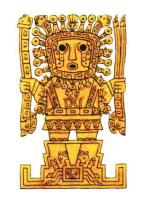 Viracocha: The Incan creator-god. After creating the natural world and the cosmos, he turned his mind to mankind. His first attempt at creating people displeased him, as the first versions were brainless giants. So, he wiped them out with a flood, and created a less barbaric race. Then, he took to wandering the world as a kindly beggar, helping those in need, and appearing in times of trouble.
Viracocha: The Incan creator-god. After creating the natural world and the cosmos, he turned his mind to mankind. His first attempt at creating people displeased him, as the first versions were brainless giants. So, he wiped them out with a flood, and created a less barbaric race. Then, he took to wandering the world as a kindly beggar, helping those in need, and appearing in times of trouble.
Mankind: Men were created when Viracocha breathed life into stones. They were seen as his children, and he loved them as a father.
Inti: The god of the sun and the son of Viracocha. After being sent to earth by his father, he and his sister-wife, Mama Killa, taught mankind the basics of life and founded the great city of Cuzco.
Supai: The Incan god of the dead, king of the demons, and the ruler of the underworld. He was such a nasty fellow, in fact, that the Incans would sacrifice their children to appease him.
Egyptian Myths
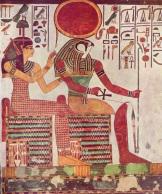 Ra: The creator and Father-God in Egyptian myths. He called everything into existence by speaking its name. Mankind was created from his tears.
Ra: The creator and Father-God in Egyptian myths. He called everything into existence by speaking its name. Mankind was created from his tears.
Mankind: Created from Ra’s tears, they were originally brutish and rebellious. They plotted against Ra, who sent divine retribution in the form of the goddess Sekhmet.
Osiris: Divine son of Ra, and god of death, the afterlife, and resurrection. He came to earth to rule as a king and bring civilization to mankind. He was tricked and murdered by his divine brother, Set, only to later be resurrected.
Set: Evil brother of Osiris, and the god of chaos, war, storms, deserts, and destruction.
Sumerian Myths
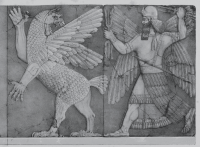 Anu: The Sky-Father and king of the divine pantheon. He was the divine judge of those who committed crimes.
Anu: The Sky-Father and king of the divine pantheon. He was the divine judge of those who committed crimes.
Mankind: Fashioned out of clay and imprinted with the image of the gods. Due to mankind’s rebellion, the gods send a flood to wipe out all but Utnapishtim, who saves his family on a boat.
Dumuzi: Human king who was later deified to become the god of fertility. He spent half the year in the underworld but was resurrected each year to bring the blessing of the growing season.
Nergal: Evil god of the underworld and harbinger of disease and death.
If these legends were derivative from the true redemption story, what likely led to the obscuration of truth in these cultures? One can only speculate. In Daniel and the Sun Sword, it was the fear of Supai that led to the Inca’s deception. For the Egyptians, no doubt the extremes of the Nile river delta led to their weaving of the divine with natural forces around them. For the Sumerians, maybe the echoes of humanistic Babel lived on in the deification of their kings. Regardless, the truth of redemption has endured…and makes the perfect backdrop for any great story.
*For any mythology aficionados out there: I know that for any one version of a myth, there are at least two others that vary in detail. I have presented here simply those versions which parallel the redemptive thread of Christianity.
“““““““““““““““““““““““““““““““““““““““““““““““““““““““““““““
If this has increased your curiosity about this author, you can investigate more about him and Daniel and the Sun Sword at his social media platforms
Website: www.nathanlumbatis.com
Facebook: www.facebook.com/nathanlumbatis
Twitter: @NathanLumbatis
Daniel and the Sun Sword can be purchased Amazon, Barnes and Noble, your local Christian bookstore both online and in store.
A little about Nathan:
 Nathan grew up in the woods of Alabama, where he spent his time exploring, hiking, and dreaming up stories. Now, as a child/adolescent therapist and author, he’s teaching kids and teens how to redeem their stories using Biblical principles. He still lives in Alabama, where you will find him with his wife and three kids every chance he gets.
Nathan grew up in the woods of Alabama, where he spent his time exploring, hiking, and dreaming up stories. Now, as a child/adolescent therapist and author, he’s teaching kids and teens how to redeem their stories using Biblical principles. He still lives in Alabama, where you will find him with his wife and three kids every chance he gets.
Peter Younghusband has been an avid reader from as early as he can remember. Since becoming a Christian in his early 20s, his passion for reading led to specifically Christian fiction and this has developed into reviewing them on his blog. He loves reading new author’s novels or authors who have not had many reviews or exposure and giving them much needed encouragement where appropriate.
